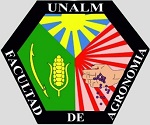Effects of seedling thickness on the production and quality of onion (Allium cepa L.) ‘Santa Rita’ in Arequipa, Peru
DOI:
https://doi.org/10.21704/pja.v5i3.1845Keywords:
onion, seedling, thickness, yield, qualityAbstract
Onion crop begins with seedling preparation and finishes with transplanting. In some Peruvian onion-productive areas, it is assumed that seedling thickness is important to have a better yield. Four different seedling thickness of red onion (Allium cepa L.) were evaluated between February and June 2017 in Santa Rita de Siguas, Arequipa, Peru. The seedling thicknesses evaluated were very thin (2.00 mm – 3.49 mm), thin (3.50 mm – 4.99 mm), standard (5.00 mm – 6.49 mm) and thick (6.50 mm – 7.99 mm). The plant density was 340 000 plants ha−1. The experimental design was a randomized complete block with four treatments and five replications. The variables evaluated were plant height (cm), leaf number, stemlike diameter (mm), bulb diameter (mm), total yield (t ha−1), and marketable yield categories (t ha−1). The leaf number, plant height, and stemlike diameter among treatments were significantly different, with higher values in the “standard” and “thick” treatments up to 60 days after transplanting. The harvest was earlier in the “standard” and “thick” treatments. The “very thin” and “thin” treatments needed more days to harvest than the others. The “thin” treatment showed the highest total yield. There were no significant differences between marketable yield categories in all treatments. It was concluded that seedling thickness upon transplanting influences the yield under the conditions in this study.
Downloads
References
Amaya, J. (2011). Respuesta de niveles de NPK en el crecimiento y producción de cebolla (Allium cepa L.) var. “Roja arequipeña” en pampas de San Juan, Laredo. [Thesis, Universidad Nacional de Trujillo]. La Libertad, Perú.
Brewster, J. (2001). Las cebollas y otros alliums. Zaragoza, España. 253 pp.
Chimborazo, D. (2015). Evaluación del rendimiento de cebolla de bulbo (Allium cepa L.) var. ‘Red Nice’ a partir de plántulas obtenidas mediante la poda de sus hojas. [Thesis, Universidad Técnica de Ambato]. Cevallos, Ecuador.
Gonzáles, E. 2003. Efecto de la fertilización nitrogenada y de la aplicación de manganeso y zinc, bajo dos modalidades: al suelo vía fertirrigación y a la planta via aspersión foliar; en el rendimiento del cultivo de cebolla (Allium cepa L.) cv. Roja Arequipeña. [Master’s thesis, Universidad Nacional Agraria La Molina]. Lima, Peru
Guillén, L. (2012). Manejo y producción de hortalizas. Universidad Católica Santa María. Arequipa, Perú. 557 pp.
Instituto Nacional de Investigaciones Agropecuarias. (2002). Informativo La Platina N° 17: Tamaño o grosor de los almácigos de cebollas y sus efectos en el trasplante y cosecha final. Santiago, Chile. 102 pp.
León, S. 2015. Niveles de nitrógeno y fitorreguladores en el bulbeo de la cebolla (Allium cepa L.) cultivar ‘Roja Ilabaya’. [Thesis, Universidad Nacional Jorge Basadre Grohmann]. Tacna, Perú
Ministerio de Agricultura y Riego. (2019). Serie de estadísticas de producción agrícola [on line]. https://guiastematicas.biblioteca.pucp.edu.pe/estadisticas-peruanas/agricultura-riego
Poma, R. (2013). Tres sistemas de plantación y tres niveles de fertilización en la producción de cebolla (Allium cepa L.) cv. ‘Roja de Camaná’ bajo riego a goteo en zonas áridas. [Thesis, Universidad Nacional San Agustín]. Arequipa, Perú.
Riekels, J., Tiessen, H., & Nonnecke, I. (1976). Onions. Ontario, Canada. 32 pp.
Downloads
Published
Issue
Section
License
Copyright (c) 2021 Andrés Virgilio Casas Díaz, Almeyda Carbajal Diego, Mirna Zuzunaga Bedón

This work is licensed under a Creative Commons Attribution 4.0 International License.







